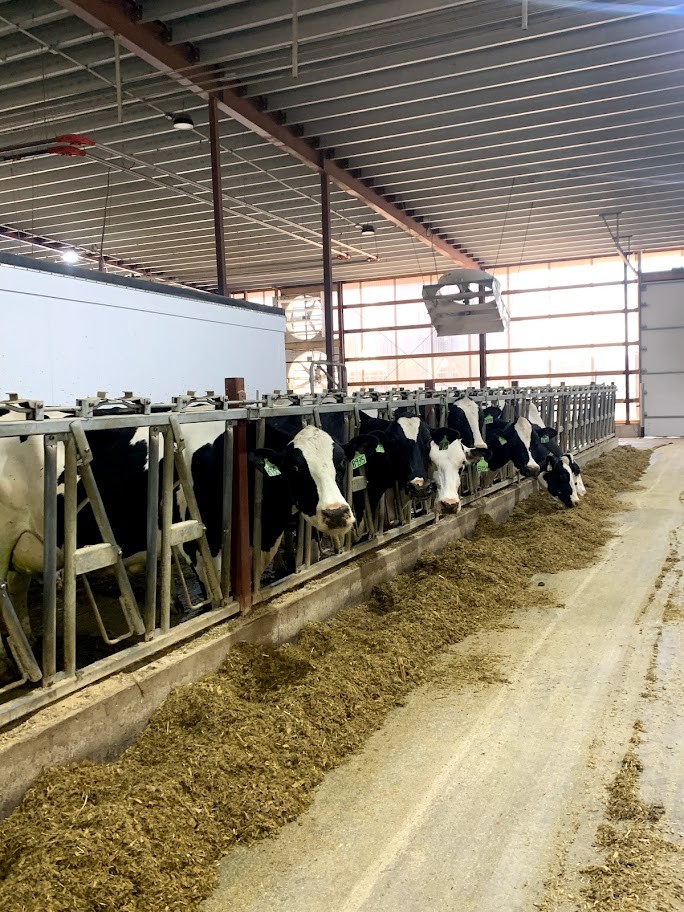Consider Stocking Density Economics - Dairy Herd Management
Consider Stocking Density Economics - Dairy Herd Management
By Derek Nolan, Dairy Herd Management - To access original article click here
The milk price outlook for 2022 has been a welcomed change over the past couple of years. Increasing the number of cows in the herd may be a way to capture the benefit of high milk prices. However, feed prices and animal behavior should also be considered.
Stocking Density Economics
The economics of stocking density can be evaluated by determining the farm's profitability per stall or space. Each cow added to a pen will add revenue and costs. Economic optimal stocking density is reached when total revenue per stall equals the total cost. However, every added cow will decrease the performance of the original cows in the pen. Performance reduction needs to be considered when calculating revenues.
Research out of the University of Florida found that milk and feed price drive the profitability of stocking density. Only when milk price is high and feed costs are low will higher stocking rates (150%) become feasible. Unfortunately, the outlook on feed prices for 2022 is similar to milk prices, high.
Ideal stocking rates presented by the Florida research were around 120% in the scenarios presented in the study. Additional research has shown that stocking rates greater than 120% can decrease animal welfare.
Lying Space = Lying Time
When having available access to lying space, cows spend 10 to 14 hours a day lying down. Research has shown an increase in stocking density leads to a decrease in lying time. One study found that a one hour increase in lying time resulted in an increase of 3.7 lbs of milk production. High stocking density can also reduce rumination time and increase stress.
Consider More Than Lying Space
Feedbunk or water space might be the most limiting area of the pen. Overcrowding at the feedbunk and waterers has been shown to decrease dry matter intake. Reducing 1lb of dry matter intake can decrease milk production by 2 lbs.
Increased stocking density can also lead to more time in the holding pen and parlor. Spending more than 4 hours from feed and water per day has a significant impact on dry matter intake.
Avoid Overstocking Transition Cows
Overstocking close-up dry cows and fresh cows can affect cow performance in the coming lactation. Limiting stocking densities to 80% can decrease the risk of transition cow diseases and increase milk production. An increase in 10% stocking density can decrease milk yield by over 1.5 lbs per day throughout the next lactation.

Upcoming Events
WEBINAR - Automated Milking Systems Efficiency: Balancing Focus on Individual Cows and System Optimization
May 8, 2024
Please join Cornell the SWNY team and MSU Extension for our talk with Dr. Pablo Silva Boloña on improving efficiency of Automated milking systems by focusing on milking settings for individual and group success.
Broiler Field Day at Sunny Cove Farm
June 6, 2024
Alfred Station, NY
Join us for a field day to explore broiler production, processing, and finances. Meghan Snyder of Sunny Cove Farm will be our host. She raises small batches of organic broilers, processing them on-farm under the 1,000 bird exemption.
Cornell Seed Growers Field Day
July 2, 2024
Ithaca, NY
Please Save the Date for the Cornell Seed Growers Field Day to be held the morning of July 2nd. The event will be held at the NYSIP Foundation Seed Barn, 791 Dryden Rd., Rt. 366, Ithaca, NY.
Announcements
No announcements at this time.





